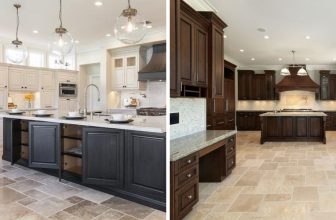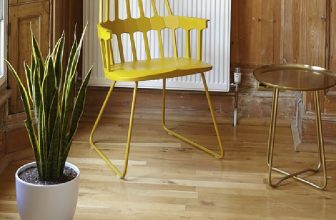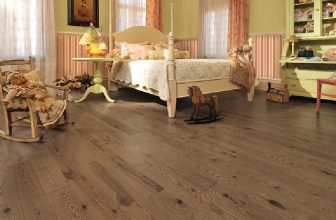How to Protect Hardwood Floors From Furniture
Hardwood floors are beautiful and add a touch of elegance to any home. However, they can become easily damaged if not properly cared for and protected from the furniture. If you want to keep your hardwood floor looking its best for years to come, it’s important to know how to protect it from the furniture.

One of the advantages of learning to protect hardwood floors from furniture is that it can help preserve the beauty and value of your floor.
Keeping furniture away from the wood will decrease wear and tear on the surface, preventing scratches, dents, fading, or discoloration. It also helps keep dirt and debris off of the floor, which can make it easier to clean.
In addition, adding protective furniture feet or coasters will provide an extra layer of protection against spills, stains, and everyday wear and tear. Not only that, but protecting your hardwood floors from the furniture also helps them last longer and look better in the long run. In this blog post, You will learn in detail how to protect hardwood floors from furniture.
Step by Step Processes for How to Protect Hardwood Floors From Furniture
Step 1: Inspect Your Furniture
Before you place any furniture on your hardwood floors, inspect the bottom of each piece. Look for any scratches, dents, or other damage that might cause harm to your floor. For heavier pieces of furniture, the place felt glides or furniture sliders under each leg of the piece to prevent it from scratching your floor.
Step 2: Use Felt Pads or Furniture Glides
For smaller pieces of furniture, such as chairs, the place felt pads or furniture glides on the bottom of each leg. This will help reduce scratches and friction when furniture is moved around. Be sure to check the felt pads periodically for signs of wear and replace them as needed.
Step 3: Place Area Rugs Under the Furniture
To further protect your hardwood floors, place area rugs or carpet runners under larger furniture pieces such as couches and armoires. This will help absorb any moisture that might accumulate on the floor and provide another layer of protection from scratches and dents.
Step 4: Keep Your Floors Clean
Finally, keeping your hardwood floors clean and free of dust and dirt is important. Vacuum or sweep the floor on a regular basis to remove any debris that could scratch your floor or cause other damage. Additionally, use a damp mop when cleaning to avoid any water damage.
By following these steps, you can protect your hardwood floors from furniture and keep them looking nice for years to come. With proper care and maintenance, your floors will stay beautiful and continue to add value to your home.
Tips for How to Protect Hardwood Floors From Furniture
- To protect your floors from scratches, be sure to place felt pads or furniture pads onto the bottom of furniture pieces that are moved often.
- Lifting heavy pieces of furniture will help prevent scratching and gouging of the flooring.
- Using area rugs in high-traffic areas can help protect your hardwood floors from dirt and debris that may be tracked in or scraped under furniture.
- Keeping your floors clean by dusting, vacuuming, and mopping regularly will help reduce the amount of dirt and dust that can cause wear and tear.
- If you use furniture pieces with casters, ensure they are soft materials, such as rubber or felt. Hard materials like plastic or metal can scratch your floors.
- Moving large appliances like refrigerators and washing machines, use a furniture dolly or appliance mover to help carry them. This will help make sure the flooring doesn’t get scratched or damaged.
- Invest in some protective covers for items such as chairs and tables that sit on your hardwood floors. This will help keep them from sliding and scratching the floor.
- To help prevent scratches, it’s a good idea to regularly rearrange your furniture so that it’s not always in the same spot. This also helps ensure that your furniture gets even wear on all sides over time.
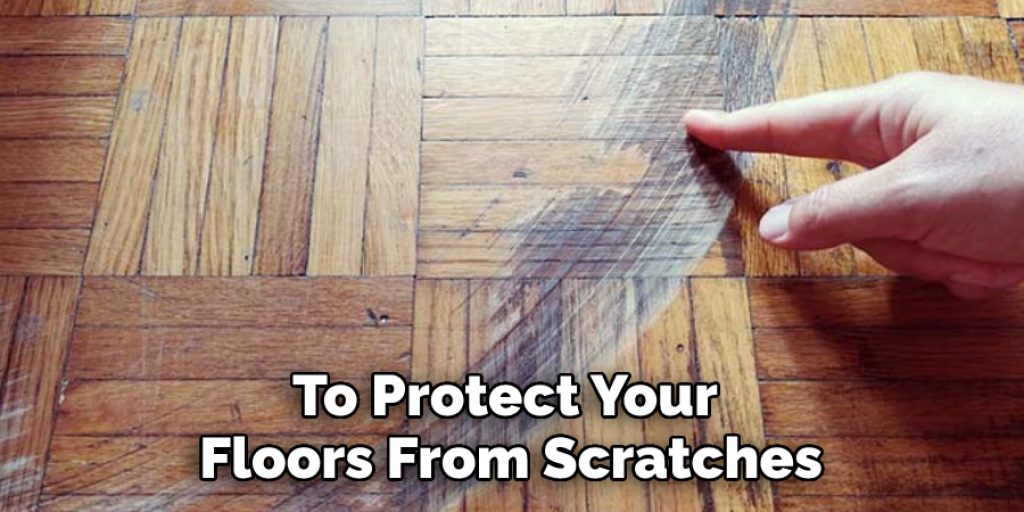
How Can You Avoid Scratches and Other Damage to Your Hardwood Flooring When Moving Furniture?
Moving furniture can be arduous, and it’s even more difficult when you have hardwood floors. Hardwood flooring is delicate and can easily become scratched or otherwise damaged if the right precautions aren’t taken. Here are some tips on how to protect your hardwood floors while moving furniture:
- Use Sliders: Sliders are large discs made from rubber or felt material that can be placed under the legs of furniture. This will allow you to move heavy pieces without scraping or scratching the hardwood floor.
- Place Felt Pads on Furniture Legs: Felt pads are small, round adhesive-backed pads that can be attached to the legs of furniture. They will provide a cushion between the furniture and the floor, reducing friction and helping to prevent scratches.
- Use Carpeting or Rugs: If you move furniture on carpeted or rug-covered floors, it’s best to keep it there during the move. The added cushioning will help to prevent damage.
- Lift and Carry Whenever possible, try to lift the furniture instead of sliding it across the floor. This is especially true for heavy pieces of furniture, as they can cause serious gouges in hardwood floors if not handled properly.
By following these tips, you should be able to move furniture around your house without damaging your hardwood floors. Protecting the wood will help it last longer and keep it looking beautiful for years to come.

How Can You Prevent Your Furniture From Sliding on the Hardwood Floor?
- The place felt pads on the bottom of all your furniture pieces. Felt pads are great for preventing hardwood floors from being scratched or damaged by furniture sliding across them.
- Purchase carpet-style adhesive strips at any hardware store and create a border around your furniture, including legs and arms. This will help keep it in place and prevent it from sliding across the floor.
- Add a layer of rubber mats or pads underneath your furniture pieces to help create a buffer between them and the hardwood flooring. This will ensure that any pressure applied by furniture won’t cause scratches or damage to the wood.
- Place rugs in front of entryways to help keep dirt and debris from being tracked in. This will also create a non-slip barrier that will help keep furniture in place.
- Use double-sided tape or chair mats to secure your furniture in place when needed. You can also use slip-resistant pads underneath each leg of the furniture for added security.
These steps will help protect your hardwood floors from sliding furniture and causing scratches or damage. It’s best to take preventative measures now to avoid costly repairs in the future.
How Can You Clean Up Any Damage Caused to Your Hardwood Floor by Furniture?
If your hardwood floors have already become scratched, dented, or otherwise damaged by furniture legs and feet, it’s important to follow the steps necessary to clean up the damage. Start with minor scratches – if possible, use a wood wax stick that matches the color of your flooring and fill in any minor surface indentations.
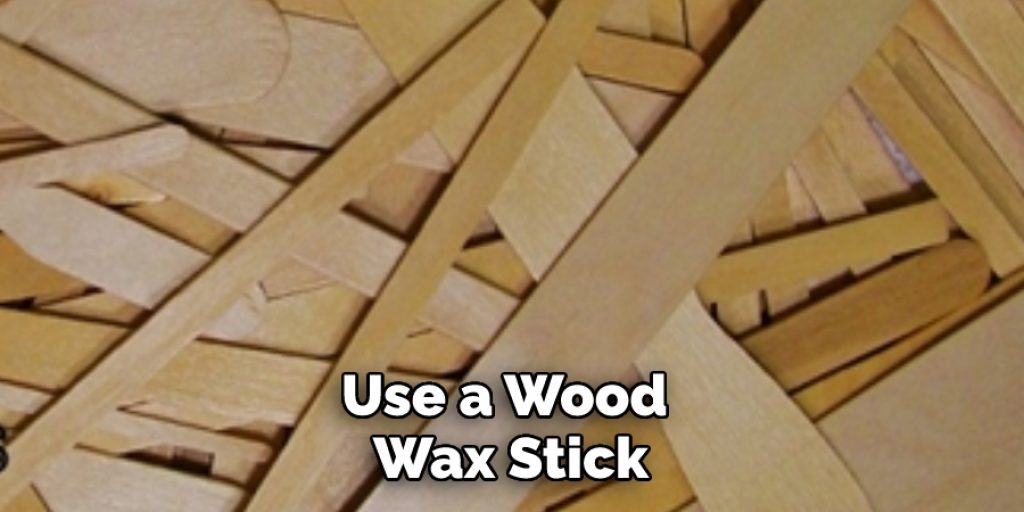
For deeper scratches, you may need to use fine-grit sandpaper and then finish with the wax stick. If your hardwood surface is gouged, you can fill the area with putty before lightly sanding the repaired area and finishing with a stain marker to better match the color of your floor. Once finished, keep in mind that no furniture piece should ever be dragged across the surface of hardwood floors, as this can cause irreversible damage.
Protecting your floor with area rugs, chairs, and furniture pads is essential to preventing future scratches, gouges, and other damage. Caster’s glides or felt pads are also important for protecting your hardwood floors from heavy furniture pieces while also providing a smoother transition as they are moved across the floor. For non-movable furniture, felt or plastic cups can help reduce the weight directly applied to the hardwood surface.
How Often Should You Check Your Hardwood Floors for Signs of Wear or Damage From Furniture?
It is important to regularly check your hardwood floors for any signs of damage or wear that may be caused by furniture. Inspecting the flooring around your furniture at least once every month is recommended, but more frequent inspections can help prevent further damage. Inspections should include looking for scratches, dents, and discoloration from furniture legs and feet.
If there are any signs of wear, you should take the necessary steps to protect your hardwood floors from further damage. Ensure to carefully inspect furniture legs and feet for any sharp edges that could scratch or dent your hardwood flooring. Check for dirt or debris on the bottom of the furniture or between its legs.
If dirt accumulates, it can act like sandpaper, damaging your floors over time. Regularly moving furniture around and cleaning underneath it can also help protect your hardwood flooring from damage. Doing this will give you the opportunity to inspect for any signs of wear more often and allow you to take action quickly if needed. Additionally, placing felt pads or furniture sliders on the legs of furniture can help reduce friction and offer additional protection.

Conclusion
In conclusion, there are several ways to protect hardwood floors from furniture. The most important way is to use furniture pads, felt chair glides, and corner protectors to avoid scratches and dents when moving or rearranging furniture. Additionally, placing area rugs beneath larger pieces of furniture can help absorb moisture while also preventing dirt and debris from damaging the floorboards.
Other protection methods include regularly vacuuming and mopping the floors and placing furniture in an area that receives minimal direct sunlight. I hope reading this post has helped you learn how to protect hardwood floors from furniture. Make sure the safety precautions are carried out in the order listed.


